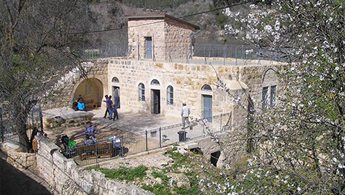HERITAGE SITE PRESERVATION
History, Sacrifice and Remembrance: Caring for Israel’s Heritage Sites
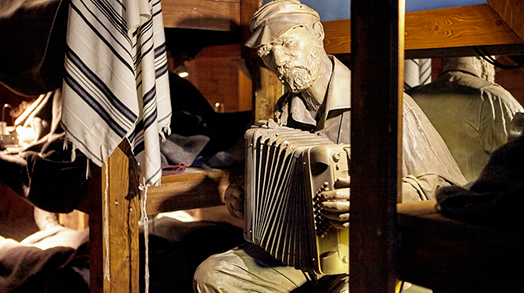
These heritage sites—some dating back to ancient times, some to Israel’s rebirth during the first Zionist settlement in the 1800’s and others to its 1948 War of Independence—are powerful symbols that inspire our nation and deserve our unwavering attention.
AMMUNITION HILL
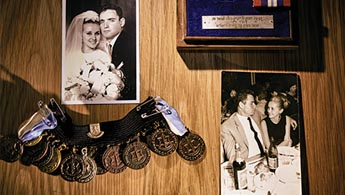
Jewish National Fund, along with the Municipality of Jerusalem and the Government of Israel, is assisting in the development and renovation of the Ammunition Hill Memorial site. The restored site portrays the siege of Jerusalem in the ‘67 War and serves as an educational center of the battles waged there. Renovations include a series of interactive exhibits, informational stations, the reconstruction of the hill and trenches and a teen leadership program. Ammunition Hill creates an emotional and informational experience for all those visiting the site and the new projects will preserve the relevance of the site for years to come and will bring larger audiences to Ammunition Hill from Israel and abroad. The brand new Ammunition Hill Museum takes visitors back through time and helps them understand the importance of this Historical Site. Divided into three sections, the first focuses on pre-1967 life in Jerusalem, while the second concentrates on the Battle for Jerusalem and the overall campaign to reunify the city. The third is about life post Six-Day War in the newly liberated and unified capital.
Ammunition Hill is also the home of the official Israel state ceremony each year that marks Yom Ha'atzmaut. Nearby, the The Wall of Honor at Ammunition Hill serves as a tribute to the heroism and courage of Jewish soldiers who, throughout our history, have fought in defense of the countries in which they lived. Proceeds from the wall benefit the development and renovation of the museum and battle grounds and construction of a computerized data center, library, an archive, exhibition hall, and a center for assemblies and conferences for over 250,000 annual visitors. Veteran dedications include the soldier’s name and country, branch, rank and dates of service.
ATLIT “ILLEGAL” IMMIGRATION DETENTION CAMP

Thanks to Jewish National Fund, in early 2017, a C-46 Commando Airplane arrived at the Atlit Detention Camp after a long journey from Alaska. The airplane will serve as an interactive exhibit describing the clandestine immigration by air. The C-46 airplane is the same model as the plane used to bring over 150 Jews from Iraq in 1947. This brave mission, known as "Operation Michaelberg," was led by Shlomo Hillel.
Located at the Atlit “Illegal” Immigrant Detention Camp is a computerized database and information center that will potentially trace as many as 130,000 “Illegal” Immigrants who came to Palestine from 1934 to 1948. A major part of the database is dedicated to personal documentation. The information about the Ma’apilim (“illegal” immigrants) also includes data regarding all the “Illegal” Immigrant boats, together with their technical specifications, details of purchase, photographs and stories of the supporting personnel and crew that manned them in their hazardous journey to Israel. The system has already gathered some 50,000 personal pages and testimonies which have been processed and recorded.
AYALON INSTITUTE: The Secret Bullet Factory
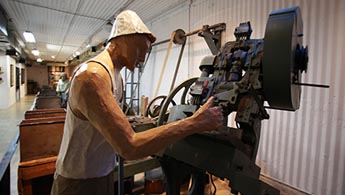
The Ayalon Institute was the largest Israeli military factory to operate underground and produced over 2.5 million bullets during its brief time in operation. A total of 45 young men and women operated under complete secrecy from 1945 until 1948. Even today, some who took part deny their role out of strict secrecy to their mission and cause.
Jewish National Fund supports ongoing rehabilitation and preservation of the site that includes a new lobby, an audiovisual show, guided tours, a reconstructed dining room, the delegation house, halls and rooms, showers and toilets; a place to hold events, conventions and seminars of up to 400 guests as well as a Eucalyptus grove with picnic tables and lodging tents.
GUSH ETZION VISITOR CENTER

The new museum offers visitors individual interactive stations where they will hear personal stories about the founders and defenders of Gush Etzion and learn about the critical events that led to their surrender. Moving through a reconstructed wartime communications trench, they enter an auditorium to watch a film based on letters written by the men who remained in Gush Etzion to their families who were evacuated to Jerusalem. Tourists then see an actual bunker where the defenders hid, and where they will watch a movie about the return of the children to Gush Etzion in 1967. The third section is an exhibition about Gush Etzion in the 21st century, displaying the modern-day achievements of the region and showing the commitment that residents have to their land.
“JNF has deep roots in Gush Etzion,” says Shani Simkowitz, director of the Gush Etzion Foundation. “As early as 1928, Jewish National Fund purchased land in the area and today owns 80% of the land there. And Kibbutz Kfar Etzion itself, which was abandoned in the 1930s, was reestablished in 1943 with the financial assistance of JNF. Today, JNF is an invaluable partner in our effort to preserve the ancient and modern history of the region.”
9/11 LIVING MEMORIAL IN JERUSALEM
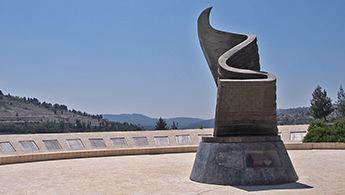
HAREUT MUSEUM
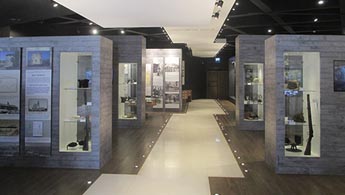
TEL HAI MUSEUM

WOMEN OF VALOR CENTER, NITZANIM

YAD MORDECHAI MUSEUM, KIBBUTZ
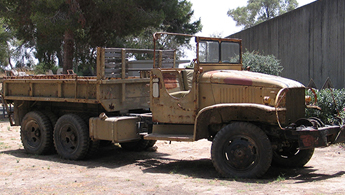
YELLIN HOUSE
